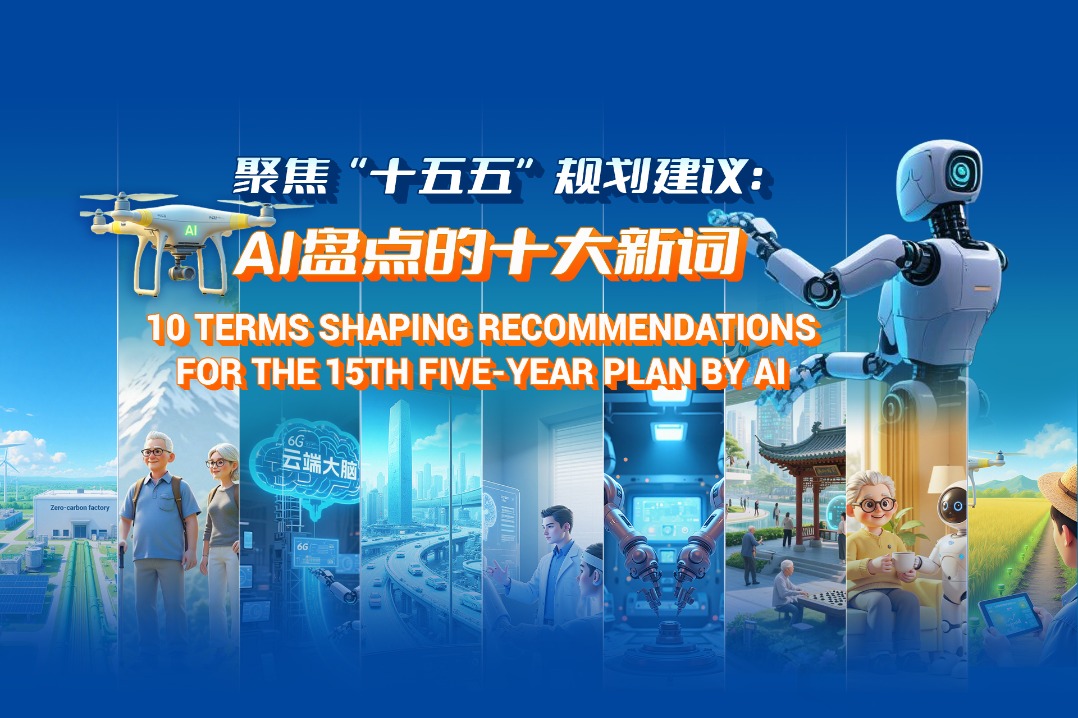China's auto parts players wining the new normal
By Gang Xu | chinadaily.com.cn | Updated: 2020-07-20 14:18

In the first quarter of 2020, the sales volume of passenger vehicles in China dropped 40 percent year-on-year, but the figure is expected to recover to the pre-crisis level by early next year. Excluding the short-term impact of COVID-19, China's passenger vehicle parts sector, based on 2.4 trillion yuan market in 2019, is projected to reach a volume of over 4 trillion yuan by 2030, maintaining a 5 percent growth rate per annum. Electric power systems, body and chassis, and automotive electronics are expected to be major contributors to the growth of the original equipment manufacturer market, accounting for about 80 percent of the market incremental over the next decade. Replacement market will mainly be driven by car parc. On the one hand, the “aging” vehicles will increase the replacement demand of car parts; on the other, new energy vehicles' prevalence would lower the demand for maintenance of certain parts (e.g., engine oil) and smart technology development would reduce the amount of parts damaged by accidents. Therefore, the replacement market growth is expected to stay in line with car part growth. With market recovery and widely adopted new parts in addition to the increasing market size, the profitability of auto parts players also saw rebound.
The four tech trends of electric autonomous driving, internet of vehicles and light-weight are closely related to vehicle parts industry. Auto parts players shall review their current product lines in order not to be wiped out by future competition. For example, the fast penetration of battery electric vehicles will drive the installed base of battery, motor and electric control systems and integration level of electric control system; as autonomous driving (L3 and above) penetrates and upgrades, the demand for ADAS and relevant parts such as sensors will also grow; under the trend of light-weight, the penetration of new material applied on vehicle body and chassis, such as aluminum alloy and magnesium alloy, will further improve. Among all segments, traditional parts confront direct challenges on its market share.
At the same time, the dynamics of market trends and maturity of technologies also prompt changes to the business models for future. As automotive electronics especially automotive software becomes the general technology, the boundaries of different segments are blurred, making cross-industry cooperation a new normal. Smart cockpit is a typical example. It integrates hardware and software, with products, data and analytics platform interconnected, to present as a comprehensive solution. It raised new requirements for the technical capabilities and cooperation ecosystems of auto part incumbents.
In order to better cope with the future changes in the market, the auto parts sector could deploy the strategies in advance based on their own operating conditions. First, improve cost management. Aside from traditional cost reduction in procurement, designing, and lean production, auto parts players should pay special attention to product complexity. They should adopt modularized and standardized management measures to reduce product complexity to achieve cost savings. On the other hand, companies should also proactively dedicate in facilitating cross-functional collaboration (R&D, production, etc.) in order to bring the cost down effectively across the whole organization
Second, streamline product portfolio. During the rapid development of auto market in China, auto parts players normally resort to expanding their sub-business to seize the growth opportunity. However, in face of the slowdown of future market growth as well as the new tech trends, they need to review and re-assess the current business portfolio to focus resources in business with great market potential and strategic synergy based on evaluation of core competitiveness of the company.
Meanwhile, rearrange capacity planning and optimize capacity. In the past, auto parts players tended to follow the OEMs' footprint and locate themselves nearby in order to achieve scale. However, in the event a gloomy market, auto parts players should conduct a holistic assessment on their capacity planning: on the revenue side, they will need to evaluate comprehensively about the potential of the OEM partner and specific model projects; on the cost side, they might as well pay full attention to the regionally different investment attraction and industry support policies in addition to the traditional factors including labor and logistics costs.
Besides, facilitate M&As for inorganic growth. When the global investment market was still deeply swamped in the spread of COVID-19, China took the lead in effectively containing the epidemic. It could serve as a good timing to drive M&As for Chinese auto parts players. Analysis shows that the ROI of M&As during economic recession registers 9 percent higher than in the boom. Therefore, auto parts players should pay close attention to and quickly scan the potential segments in auto parts market, evaluate the acquisition targets and the business synergies they can bring, and take prompt actions when time is ripe. Considering leveraging third-party data base and analytical tools during the M&A process might bring in multifold return.
Furthermore, sustainable product differentiation strategy must be adopted. Auto parts players have to move from the traditional “passive innovation” to “initiative innovation”. On the one hand, they should stand closer to consumers and end market so as to know about the pain points and demands of the customers; on the other hand, they need to improve organization structure from the back end, innovate work process even transform the corporate culture, in order to foster the future development in innovation-centered fields.
Lastly, boost the after-market business. As the appeal of replacement market increases gradually, auto part players should step up building their after-sales market capabilities, which are completely different from those in OEM market. Taking channel management as an example, it includes the formulation of business policies and capability training of distributors and retailers, etc. In addition, e-commerce channels also need close attention, including co-operation with e-commerce platforms, product portfolio design, etc.
In the face of pressure caused by consecutive years of slowing-down demand and intensifying competition, expanding new markets could be a way to digest overcapacity. The declining profitability and emerging new technologies propel companies to speed up tech upgrading, and globalization help the acquisition of new technologies and top talents. In the meanwhile, China-proposed Belt and Road Initiative and tax breaks for Chinese companies in many countries are encouraging Chinese auto parts players to go global. The concept of going global is not only limited in sales, but also in broader topics including strategic planning and cooperation with global vision, global supply chain and global organization, talent and governance model. Currently, there is still a large room to grow for leading parts players in terms of the percentage of their overseas presence, revenue and workforce. They need to develop the core capabilities to the fullest for a winning global presence.
First, parts players should adopt a fitting model to go global based on their business development goals, stages and strategies. For example, they could fast acquire core capabilities through M&As to meet the capability gap. While promoting their brands overseas, companies could specifically design the product name and slogan to fit for the local culture. For overseas sales, aside from leveraging local teams' resources to develop new customers, acquiring/investing in large sales channels (e.g., large dealer group) is also a good way for fast market entry.
For the location selection of R&D base, companies could look for places with large talent pool, innovative vibe and industrial clustering effect and plan in advance. In the meantime, they could also pay attention to the local market, seeking to develop products tailored to the market needs to seize the growth opportunities. For building factory overseas, the appeal of local market is still the important driving force. For example, the nations where the infrastructure construction is booming should bring potential markets for commercial vehicle parts players.
For overseas branches in low synergy with core business with strong capability to operate independently, companies shall lessen control on them and set only broad financial and strategic targets; for those in close relation with core business and more reliant on headquarter support and guidance (e.g., R&D, testing), more detailed financial & strategic goals and specific operation management are needed.
It is worth noting that companies should give full notice to differences of laws and rules in different countries and regions, and identify various compliance issues, such as labor protection, environment protection, etc. On the other hand, enterprises should build global-facing, top-down compliance system and procedures, in order to recognize and process compliance risks in a timely manner to secure the successful implementation of globalization.
At last, devise the talent recruiting strategy based on development needs. For example, parts players could send their Chinese staff overseas as management at early stage to ensure strategic alignment and mitigate risk, and gradually open senior positions to local talents. Competitive remuneration, work environment and models encouraging diversified culture background, and long-term career development paths are all significant to ensure team stability.
From a short-term point of view, China's auto parts market is under tremendous pressure. But if players look at the long-term picture, they will find great growth potential existing in the industry in the digital and smart era of the future. Only those who observe constantly, plan ahead and always stand ready can seize the opportunities of the rising new technologies and win the future.
The author is a Managing Director and Senior Partner at Boston Consulting Group (BCG). He is also the leader of BCG's Automotive and Mobility practice in China.
























